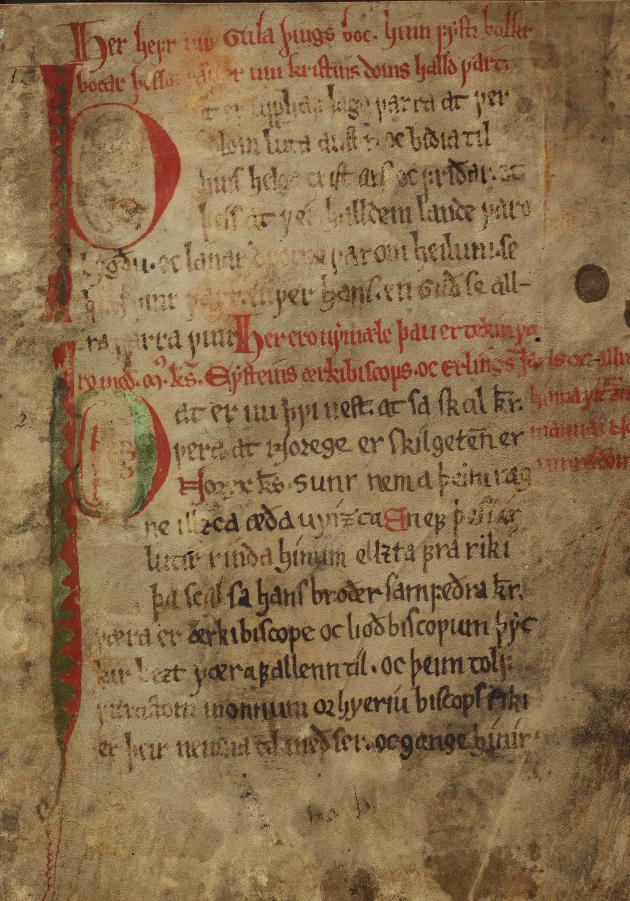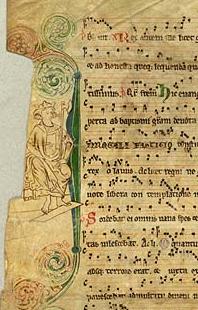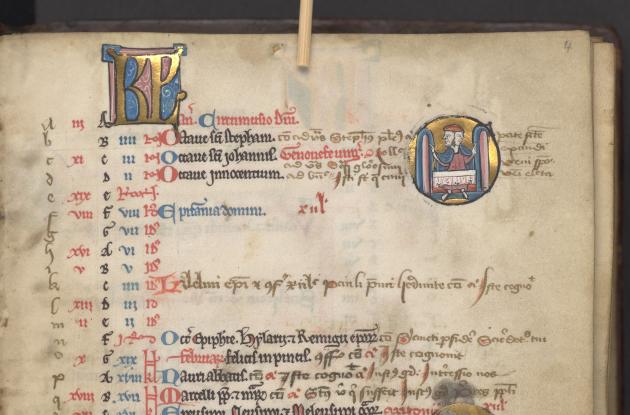A Nordic treasure chest
Get the historical details of five of the most important manuscripts in our collection and experience how centuries of interweaving Nordic history is reflected in the cultural heritage.
Law manuscripts, prayer books, saga works and much more: In the library's collections, we find cultural treasures not just from Denmark, but also from the other Nordic countries. Five of the most famous medieval manuscripts from Norway belong to Royal Danish Library, but is currently on "holiday" in Oslo, where they contribute to illuminating the shared Danish-Norwegian history as well as medieval book culture.
Royal collecting mania
Royal Danish Library has its origins in the book collection from King Frederik III (1609–1670), which contained a number of medieval manuscripts. In the 17th century, interest in the old books flourished as a result of a new historical awareness, and both the king himself and other collectors took great care in acquiring ancient writings.
The old Icelandic and Norwegian saga works were particularly popular, but other types of manuscripts also found their way to Denmark and Copenhagen. The library's collections therefore contain books and works that are essential to the history of the Nordic region as well as that of Denmark.
Exhibition in Norway
Five of the library's manuscripts are now on long-term loan to the National Library in Norway, where they will initially be shown in the new medieval exhibition Med lova i hand (1 February – 14 September 2024).
The exhibition marks the fact that it has been 750 years since King Magnus Lagabøte introduced the Norwegian Land Law, but it also thematises the society from which the law arose. Therefore, it is not only law books that are exhibited, but also manuscripts that shed light on other aspects of the culture of the time, such as saint worship, liturgy and the European ties of the royal family.

Photo: Det Kgl. Bibliotek
By law, land must be built
The oldest of the loaned law manuscripts is the so-called Codex Rantzovianus (E Don. Var. 137 quarts) from approximately 1250–1260 and named after the Danish official and collector Christian Rantzau (1684–1771).
The manuscript contains the only complete version of the Gulating Act, one of the older landscape laws that applied to the western part of Norway. The law was probably written down in connection with the major revisions of the law that culminated in the Land Law – the first law that applied to the entire Norwegian kingdom.
A well-used law book
Codex Tunsbergensis (NKS 1642 quarter) is named after the Norwegian town of Tønsberg, where the manuscript was in use. The oldest part, which contains, among other things, the national law and a calendar in Latin, was probably written around the year 1325.
A number of laymen – the jurists of the time – and their assistants used the manuscript over a long period, and new legal texts have been added right up to the end of the 16th century. But when Christian IV's Norwegian law came out, and even in a printed version, the Codex Tunsbergensis went from being a utility object to a collector's item.
Illustrated law book
In contrast to the Tønsberg law book, which appears as a distinctly useful manuscript, the Codex Hardenbergianus (GKS 1154 folio) is a decorated ornate book. It contains the Land Law and several other legal texts, and was produced in Bergen in the middle of the 14th century.
The manuscript is rare not only because of its beautiful illuminations, but also the fact that it was named after a woman, namely the Funen noblewoman Helvig Hardenberg til Arreskov. She came into possession of the manuscript around the year 1560, probably in Bergen, where her husband Erik Rosenkrantz was sheriff.
In recent years, the Codex Hardenbergianus has been exhibited together with several of the National Library's own treasures, but is now given a place among its "colleagues" in the new exhibition.
A royal prayer book
The last two loaned manuscripts are not law books, but illuminate in different ways the culture from which the national law sprang. However, one manuscript does not come from Norway, but from Paris.
The Kristina psalter (GKS 1606 quarto) is a richly decorated prayer book, a psalter, produced around 1230. Thanks to an inscription on the book's cover, we know that it belonged to King Magnus Lagabøte's sister, Kristin/Kristina (d. 1262). She married the Spanish Prince Felipe, brother of King Alfonso X, and it is possible that she was given the psalter as a gift on the journey to Spain.
How the book came to Norway is unknown, but it was passed down through noble families before it came to the monastery of Nonneseter in Oslo, where it was bought by the collector Peder Syv (1631–1702).

Photo: Det Kgl. Bibliotek
A manuscript in fragments
The last manuscript, the Nidaros Antiphonary (Additamenta 47 folio), has survived only in fragmentary form. An antiphonary is a type of choral book that was used during the regular services of the day, the liturgical prayers.
Although the manuscript is fragmented, we can see that it was a large and beautiful book. It has been in use in the cathedral of Nidaros, the medieval name for Trondheim. An illustration of Saint Olav, the patron saint of Nidaros and Norway, adorns one leaf.
How and when the book came to Denmark is not known, but the fragments were used to bind accounts from 1624 to 1630 in the Copenhagen University archive.
Intertwined history
The history of Norway and Denmark is closely linked, and has been for many hundreds of years. King Magnus Lagabøte was himself married to a Danish princess, namely Ingeborg (died 1287), daughter of King Eric Plowpenny. Both the manuscripts, their fate and the new exhibition bear witness to this common history, and thus shed light on a rich and significant part of the Nordic cultural heritage.
